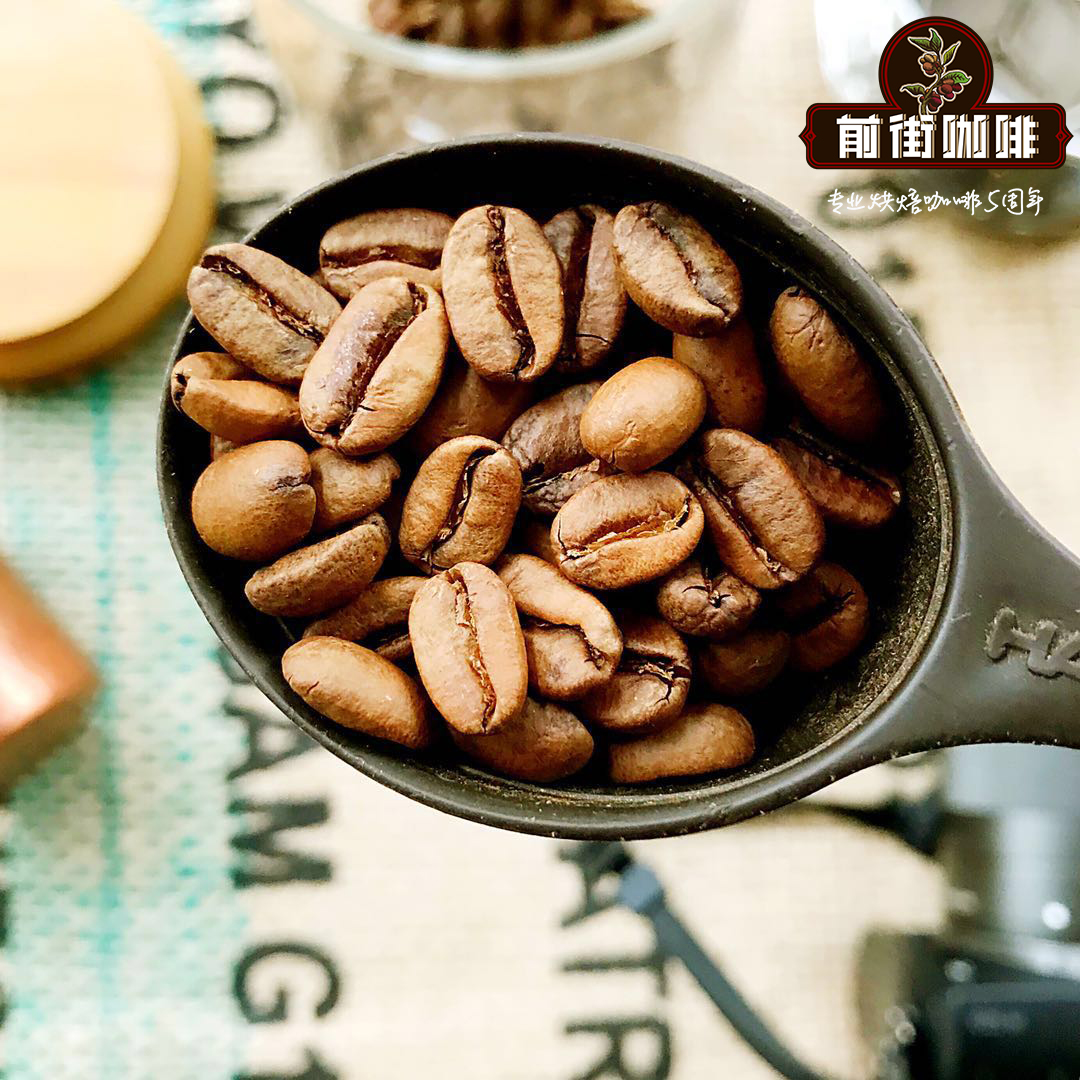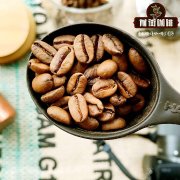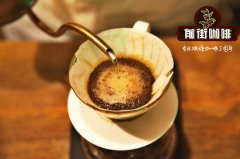Honduran Coffee from San Vincent processing Plant, Honduras

Professional coffee knowledge exchange more coffee bean information please follow the coffee workshop (Wechat official account cafe_style)
Product name: San Vincent treatment Plant, Honduras, Huazhong Mello small Farmer washing
(Honduras San Vicente Juan Contreras Miraflores)
Producing area: Pena Blanca town, Santa Barbara (Santa Barbara)
Processing plant: St. Vincent treatment plant (Beneficio San Vicente)
Variety: Pacas, Catuai, Lempira
Grade: washing SHG
Altitude: 1400 to 1700 m
Certification: NCMA
Flavor description: nut hue, fresh cedar, chocolate bread,
Cashew nuts, round syrup, clean and sweet taste
Introduction:
Coffee was grown in Honduras in 1804 and now has 280000 hectares of coffee plantations.
All of them are mainly small coffee farmers, and the planting area of their coffee plantations is mostly less than 3.5 hectares.
Coffee farmers account for 60% of Hongguo's coffee production. Coffee production in Honduras in 2011
Surpassed Guatemala and became the second largest exporter of washed Arabica beans in the world in 2012.
Second only to Brazil. It now ranks seventh in global production. Coffee cultivation is not like a banana garden.
Owned by two large American consortia and oligarchs, 92% of Honduran coffee farmers are small individuals.
Coffee-related workers account for 12.5% of the total population of 8 million, so coffee is in Honduras.
Is a very important crop. In the coffee garden, coffee farmers harvest red fruit, wash it, ferment it and add it.
To grade according to the needs of the market to meet the needs of different tastes of consumers. Honduras
3 million bags of coffee are harvested every year to provide good quality coffee and unique coffee flavor.
With a large quantity and excellent quality, it has become the largest producer in Central America and one of the top ten in the world.
Coffee exporter. The coffee industry in Honduras involves the livelihoods of hundreds of thousands of families across the country.
Provide one million jobs for important economic agriculture in Honduras.
Large coffee producing areas in Honduras, including Copan and Opalaca in western and southern areas.
, Montecillos, Comayagua, Agalta, El Paraico, etc.
The average planting height is 1100 to 1700 meters above sea level. The variety of coffee is
Of the 100% Arabica species, 69% belong to the HG class and 12% to SHG,19% and CS. Main
Coffee varieties include Typica, Bourbon, Caturra, Villa Sarchi and Lempira.
Honduran coffee has always been of high quality, and its price is the most competitive in Central American countries.
Small, round, slightly bluish-green coffee, mild sour, full and slightly sweet
Suitable for both mixed coffee and single coffee, suitable for medium to deep roasting
Mainly exported to the United States, Germany and Japan. Honduras is already the first largest in Central America.
Coffee producing countries, whose output has been increasing in recent years, due to high international coffee prices in 2012.
The output of coffee in this year exceeded 5 million bags in 2010, with a great increase in production and continuous improvement in quality.
The largest coffee province in Honduras is the The Santa Barbara region, which is located in western Honduras.
Is in the northwest of Lake Yojoa, an area that has developed into Honduras in the past few years.
Famous coffee producing area. At the same time, this area comes from a famous agronomist Mr. Angel Arturo Paz
He owns a post-processing plant, St. Vincent's treatment Plant (San Vicente), in the western Yojoa Lake.
The small town of Pe ñ a Blanca in the northern Santa Barbara province (Santa Barbara)
He has always been the winner of the COE (Cup of Excellence) Cup in Honduras. St. Vincent treatment plant
Acquire the surrounding towns of El Cielito, Las Flores and El Cedral (these
Each place has at least 35 families and one school) coffee cherries produced by small coffee farmers.
Although the number is so small that it is usually difficult to separate these small farmers' output batches.
But the coffee produced in these regions has always been amazing with high sweetness and fruity.
St. Vincent (San Vicente) is a family-run processing plant that is well known locally.
As a result of assisting farmers to upgrade their planting technology and improve production equipment through projects, they are committed to investing in
The close contact of the producer, and take the coffee cup test as each batch of products strictly guarded.
This batch of St. Vincent treatment Plant Tropical Rainforest Certification SHG is a processing plant to acquire the surrounding area.
Small coffee farmers combine production and marketing, because the average planting area of each small coffee farmer is only
1Mel 2 hectares, the kilograms of raw beans for coffee production can not be sold independently, but can only be combined.
The whole batch of marketing together is a bit like a co-operative or a coffee production and marketing shift.
This batch of Saint Vincent (San Vicente) Flower Merlot small Farmers (Juan Contreras
Miraflores) the non-raw beans are produced in a nearby village for a group of small coffee farmers.
Collection, the general small farmers planting area is very small, can not handle the sale of raw beans alone, can only
Sell to the processing plant and sell together in a concentrated quantity. Flavor description: nutty hue, fresh cedar,
Chocolate bread, cashew nuts, round syrup, clean and sweet taste.
Important Notice :
前街咖啡 FrontStreet Coffee has moved to new addredd:
FrontStreet Coffee Address: 315,Donghua East Road,GuangZhou
Tel:020 38364473
- Prev

Honduran Coffee from San Vincent processing Plant, Honduras
Professional coffee knowledge exchange more coffee bean information please follow Coffee Workshop (Wechat official account cafe_style) Product name: San Vincent processing Plant in Honduras Flower Melo small Farmer washing (Honduras San Vicente Juan Contreras Miraflores) production area: Santa Barbara (Santa Barbara) Pena Blanca small Town processing Plant: St. Vincent Office
- Next

Characteristics of Historical Flavor and Taste of Nayarit Nayarit Coffee grown in Mexico Coffee producing area
Professional coffee knowledge exchange more coffee bean information please follow the coffee workshop (Wechat official account cafe_style) Mexico Mexico honey, walnut, almond, banana, cocoa, nuts, finish and taste light and smooth. Located in North America, with a diverse climate, the 14th largest country in the world and the fourth largest coffee producer, with an annual output of about 5 million bags of coffee
Related
- Detailed explanation of Jadeite planting Land in Panamanian Jadeite Manor introduction to the grading system of Jadeite competitive bidding, Red bid, Green bid and Rose Summer
- Story of Coffee planting in Brenka region of Costa Rica Stonehenge Manor anaerobic heavy honey treatment of flavor mouth
- What's on the barrel of Blue Mountain Coffee beans?
- Can American coffee also pull flowers? How to use hot American style to pull out a good-looking pattern?
- Can you make a cold extract with coffee beans? What is the right proportion for cold-extracted coffee formula?
- Indonesian PWN Gold Mandrine Coffee Origin Features Flavor How to Chong? Mandolin coffee is American.
- A brief introduction to the flavor characteristics of Brazilian yellow bourbon coffee beans
- What is the effect of different water quality on the flavor of cold-extracted coffee? What kind of water is best for brewing coffee?
- Why do you think of Rose Summer whenever you mention Panamanian coffee?
- Introduction to the characteristics of authentic blue mountain coffee bean producing areas? What is the CIB Coffee Authority in Jamaica?

